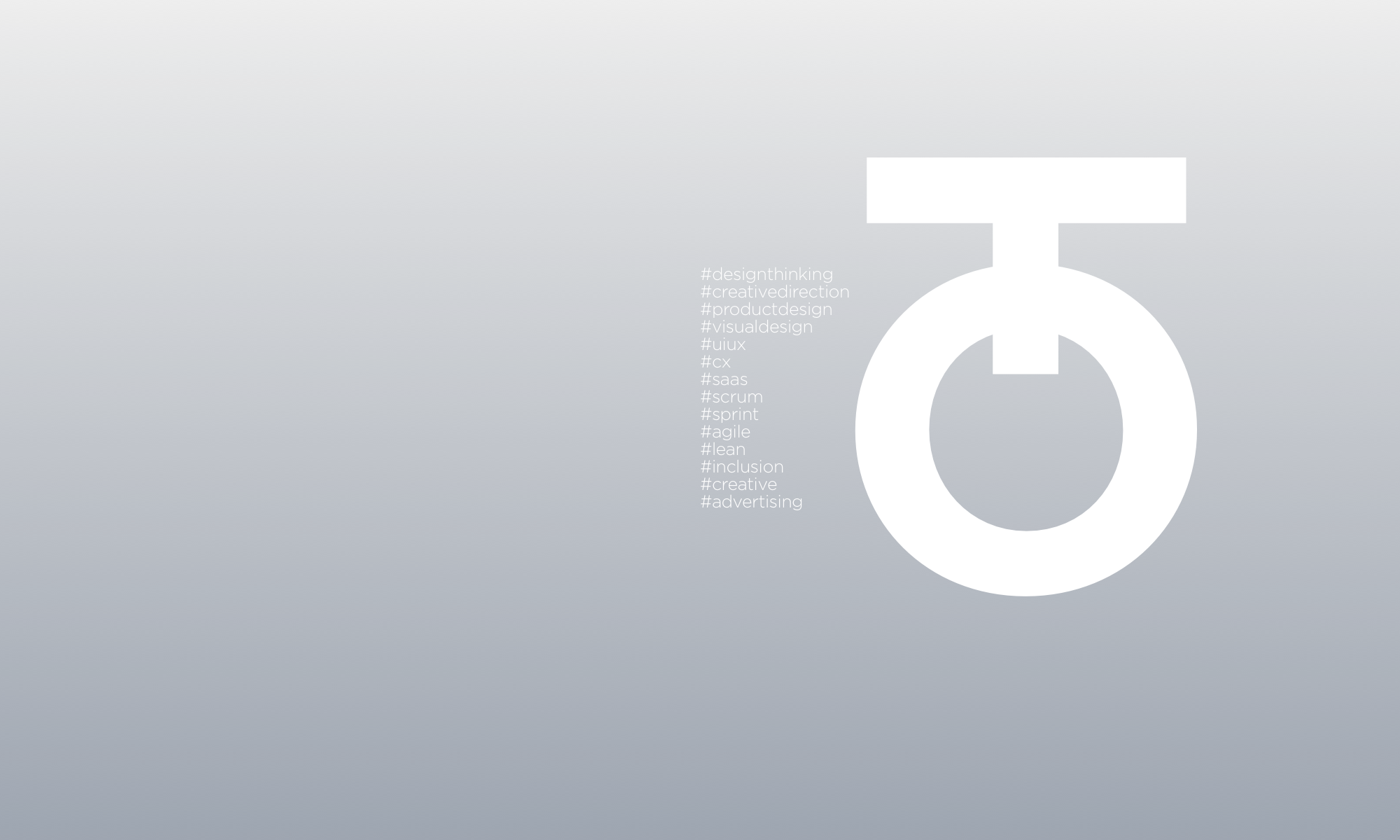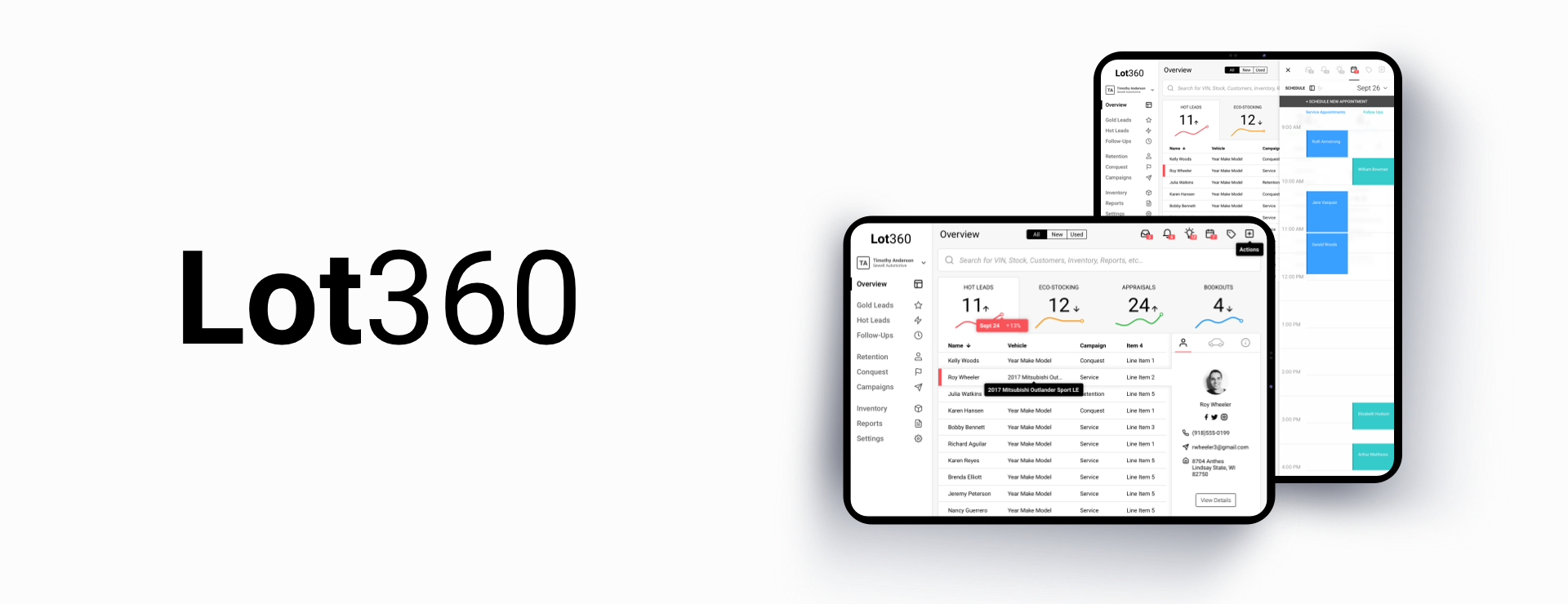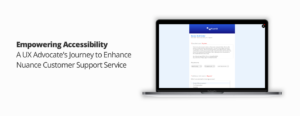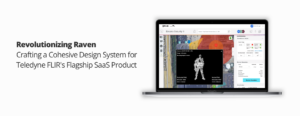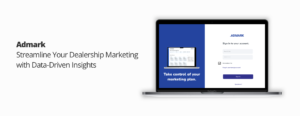
As the Creative Director and Lead Designer at Pearl Technologies, a leader in automotive SaaS innovation, I orchestrated the UX/UI redesign of our suite to meet the evolving needs of the automotive industry. Our suite, comprising VehicleXchange, Trade-In Concierge, ShowroomXpress, and Proximity, had already set benchmarks in connecting dealerships with potential buyers through advanced technology solutions.

A pivotal aspect of this project was enabling “white labeling” for our products, allowing dealerships to seamlessly integrate their brand identity into our platform, thus fostering a more personalized consumer experience.
Challenge
The core challenge of this initiative was to consolidate these four distinct products into a unified, user-friendly platform named Lot360. Our ambition was to elevate the dealership experience and amplify consumer engagement by weaving the essential features of our existing products into Lot360, thereby offering a cohesive user journey.
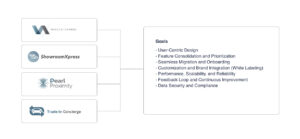
Moreover, a crucial part of this transition was to ensure existing clients could migrate effortlessly to Lot360. This involved a meticulous process of validating our design and operational assumptions and actively incorporating dealership feedback to refine and adapt our strategy, ensuring the platform not only met but exceeded the industry’s dynamic requirements.
Planning
Over 14 weeks, leading a design team of three (see below), we collaborated with a Scrum team comprising front-end and back-end leads, a scrum master, QA, and a Product Manager, reporting directly to the CTO. This phase involved asset preparation for engineering, followed by active engagement in sprint reviews and UI assessments to ensure alignment with project goals.
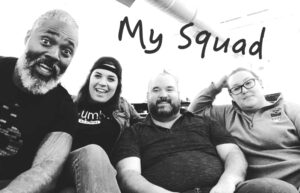
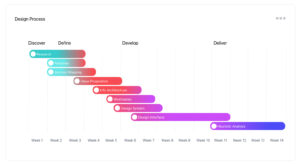
Design Thinking
Embracing Pearl Technologies’ ethos of user-focused design, we embarked on a journey to deeply understand dealership workflows. Through immersive research, our goal was to uncover insights that drive meaningful improvements, balancing innovation with practical user needs.
EMPATHIZE: Understanding Dealership Needs and Consumer Behaviors
Recognizing the multifaceted challenges in automotive sales, from commission-based pressures to hurdles in customer acquisition, our goal was to refine the sales experience for both dealership staff and customers. Insights were gained through comprehensive fieldwork across major dealerships and engaging directly with car owners and buyers. This approach allowed us to understand the pain points and expectations from both ends of the sales spectrum firsthand.
RESEARCH TOOLS
– Desk Research (industry related, NADA, NPS, Google)
– Interviews
– Ethnography
– Full Story
– Surveys
In group interviews with users deeply engaged with the SaaS products (spanning sales drive, service drive, and marketing functions), we employed various UX Design prioritization frameworks to pinpoint their wants, needs, desires, and challenges. Among these methods were:
– Feasibility, Desirability, and Viability Scorecard
– MoSCoW Analysis
– Kano Model
-
- Action Conducting comprehensive research to gather insights into the daily challenges, workflows, and aspirations of dealership staff. This phase also involved engaging with car owners and buyers to understand their experiences, needs, and frustrations in dealing with dealerships when selling or purchasing vehicles. Methods included interviews, shadowing, ethnographic studies, and surveys among both dealership employees and consumers.
- Outcome A nuanced understanding of the end-users (dealerships) and their customers (car owners and buyers), encompassing frustrations with existing systems, desires for a more streamlined buying and selling process, and the specific needs that vary from one dealership and customer to another. This dual perspective ensured a holistic view of the automotive ecosystem, highlighting areas where Lot360 could facilitate improved interactions and transactions.
DEFINE: Articulating User Problems and Opportunities
Synthesizing user feedback, we developed personas reflecting the diverse roles within dealerships, identifying unmet needs and formulating a refined problem statement. This phase crystallized our understanding, aligning the project with user expectations and business objectives.
WHO IS OUR USER?

PAIN POINTS AND DESIRES
Exploring the deep, unmet needs revealed critical pain points and desires among dealerships and their customers. Dealerships expressed a need for efficient lead acquisition, specifically through processed leads from Experian, to enhance their sales pipeline. Customers desired a streamlined vehicle trade-in process that saves time and simplifies their experience. There was a strong preference among consumers for the ability to quickly personalize payment options directly from lenders, enhancing financial transparency and flexibility. Dealerships sought to increase showroom visits through the use of hyper-targeted digital advertising campaigns, aiming to attract potential buyers more effectively.
-
- Action Synthesizing the insights gathered during the empathy stage to clearly define the problems faced by dealerships. This involved creating user personas, outlining user journeys, and pinpointing specific pain points and opportunities for innovation.
- Outcome A set of clearly articulated user needs and problems that Lot360 needs to address, serving as a guiding beacon for the development process.
OPPORTUNITY IDENTIFIED: Enhancing Prospect Engagement
During our research, dealerships expressed a keen interest in engaging with prospects directly and efficiently, especially following interactions with online ads. This insight led to the development of an innovative feature within our platform:
Direct Engagement with Prospects via Smartphone
-
- Feature Overview: Leverage our Rapid Proactive Messaging (RPM) platform to send instant alerts to dealership staff when prospects interact with marketing campaigns, enabling immediate engagement.
Key Features
-
- Rapid Proactive Messaging Alerts: Immediate notifications allow sales teams to connect with interested prospects without delay.
- Dynamic Text Templates: Equip your team with customizable message templates to ensure relevant, personalized communication.

Enhanced Reporting and Accountability
-
- All interactions and alert responses are meticulously logged, providing managers with daily reports. This feature is designed to enhance accountability, ensuring timely follow-ups with potential leads.
Example Alert Categories
-
- Prospects inquiring about cash offers for their vehicles.
- High-value customers scheduled for service appointments.
- Individuals seeking information on payment options.
- Lease customers approaching their contract end date within 120 days.
This opportunity allows dealerships to revolutionize how they connect with potential buyers, offering a direct line of communication that is both proactive and responsive to customer interest.
USER STORIES: The Backlog of Lot360
Creating a backlog of user stories for Lot360, based on its feature set, involved breaking down the functionality and expected user interactions into specific, actionable items.
Below are some of the user stories that were included in Lot360’s backlog. We used JIRA and Confluence for our communications and documentation.
For Dealership Staff
-
- As a dealership manager, I want to easily import leads processed through Experian, so that I can quickly reach out to potential customers with high intent.
- As a sales representative, I want to receive real-time alerts on my smartphone when a prospect engages with our marketing campaigns, so that I can immediately initiate personalized communication.
- As a service advisor, I want to be notified when high-value customers schedule service appointments, so that I can prepare personalized service offers and enhance customer satisfaction.
- As a finance manager, I want to help customers personalize their payment options easily, so that they feel more in control and satisfied with their financing choices.
- As a sales team member, I want to track prospects requesting cash offers for their vehicles, so I can provide competitive offers and increase trade-in rates.
For Customers
-
- As a prospective buyer, I want to explore and personalize my vehicle payment options online, so that I can plan my finances without feeling pressured.
- As a car owner, I want to receive a fair cash offer for my vehicle quickly, so that I can make an informed decision about trading in my car.
- As a leaseholder approaching my contract’s end, I want to discover my options in advance, so that I can smoothly transition to my next vehicle.
For Dealership Marketing
-
- As a marketing manager, I want to create and deploy hyper-targeted digital ad campaigns easily, so that I can drive more qualified traffic to our showroom.
Reporting and Accountability
-
- As a dealership manager, I want to receive daily reports on alert activity and follow-ups, so that I can hold my sales team accountable and ensure no opportunity is missed.
For System Administrators and Managers
-
- As a dealership IT manager, I want to seamlessly integrate Lot360 with our existing CRM systems, so that we can have a unified view of the customer journey.
- As a dealership owner, I want to customize the look and feel of Lot360 to match our brand, so that the platform feels like an extension of our dealership’s identity.
Prioritization and Refinement
These user stories would then be prioritized based on factors like business value, user impact, and technical complexity. The team would regularly refine this backlog, adding new stories and adjusting existing ones based on ongoing feedback and discovery during the development process. This iterative refinement ensures that the development team always works on the most valuable features that align with the users’ needs and business goals.
IDEATE: Generating Solutions
-
- Action Brainstorming sessions with multidisciplinary teams to generate a wide range of ideas for addressing the defined problems. Techniques such as SCAMPER, brainwriting, and role-playing were employed to foster creative solutions.
- Outcome A diverse set of potential features, functionalities, and design elements for Lot360 that promise to enhance dealership operations, user experience, and customer engagement.
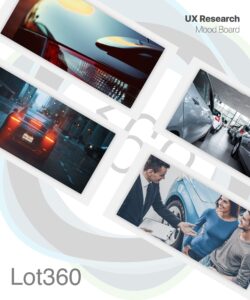
VALUE PROPOSITION: What is the value for dealerships and their customers?
During the Ideate phase, we crafted a compelling value proposition that integrates the dynamic capabilities of Rapid Proactive Messaging (RPM) Alerts with targeted consumer interactions, streamlining dealership communications and enhancing customer engagement:
Elevate your dealership’s customer engagement strategy with Lot360, our comprehensive SaaS package. Lot360, incorporating Rapid Proactive Messaging (RPM) Alerts, streamlines direct interactions with prospects and customers at pivotal moments. Whether offering competitive cash deals for vehicles, managing service appointments, or tailoring finance options, Lot360 ensures your dealership remains perfectly aligned with evolving customer needs. Additionally, it identifies lease customers nearing their contract’s end, facilitating timely and personalized communication. This innovative blend of technology with deep customer insights positions dealerships to proactively meet demands, enhancing conversions, satisfaction, and loyalty in today’s competitive market.
This value proposition emphasizes the seamless and proactive engagement capabilities of the platform, promising dealerships an unmatched tool for optimizing customer interactions and maximizing sales opportunities.
PROTOTYPE: Bringing Ideas to Life
In the Prototype phase of developing Lot360, our team transitioned from theoretical solutions to tangible, interactive models. This critical step in the Design Thinking process allowed us to bring the collective vision for Lot360, our comprehensive SaaS package, into a concrete form. Utilizing insights from earlier phases, we crafted prototypes ranging from low-fidelity sketches to advanced digital mock-ups. These prototypes served not just as proof of concept but as vital tools for exploring the functionality, user experience, and overall design of Lot360.
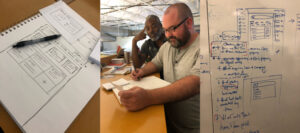
Through iterative development and constant refinement, we aimed to ensure that every aspect of Lot360 was user-centric, intuitive, and aligned with the specific needs of our target audience. This phase was instrumental in visualizing how the unified features and capabilities of Lot360 would operate in real-world scenarios, setting the stage for user testing and further iterations.

Utilizing the insights we gathered, we simultaneously developed the mid-fidelity wireframes and the design system, ensuring crucial information was thoughtfully placed. This method allowed us to incorporate the streamlined features from our suite of SaaS products effectively. As a result, we delivered an improved user experience, positioning vital information intuitively within the interface while maintaining the lean functionality characteristic of our platform.
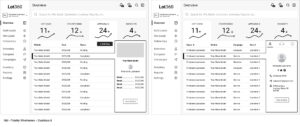
For our design system, we opted for Ant Design due to its comprehensive suite of high-quality React components, which aligned perfectly with our project goals. This choice was instrumental in bridging the gap between design and engineering, facilitating a frictionless handoff of components and ensuring optimal performance from a coding standpoint. Collaborating closely with our engineering team, we utilized Ant Design’s extensive library to emphasize the use of reusable components, significantly streamlining our development process. This approach not only expedited the build phase but also eliminated unnecessary development efforts, making every component count towards building a scalable, efficient, and maintainable end product.
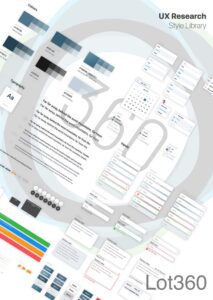
-
- Action Developing prototypes of varying fidelity for different aspects of Lot360, from low-fidelity wireframes to interactive digital mock-ups. These prototypes aimed to materialize the solutions conceptualized during the ideation phase.
- Outcome Tangible representations of Lot360 that could be interactively experienced, enabling the team and stakeholders to visualize and engage with the proposed solutions.
TEST: Refining Solutions Through Feedback
During the testing phase, our team dedicated several weeks to meticulously crafting a prototype utilizing Sketch for design creation and InVision for interactive prototyping. This phase was critical in bringing our concepts to life, allowing us to simulate the user experience across different roles within the dealership environment.

We conducted variant testing, tailoring scenarios and functionalities to match the specific needs and workflows of various roles, such as sales representatives, service advisors, and dealership managers. This targeted approach enabled us to gather rich, role-specific feedback, ensuring that our final product would not only meet but exceed the expectations of all users.
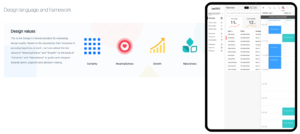
Through iterative testing and refinement, we were able to identify and address usability challenges, optimize workflows, and fine-tune the user interface, all with the aim of enhancing the overall effectiveness and user satisfaction with our platform.
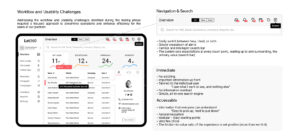
To uncover usability and workflow issues with the InVision prototype, we employed a multi-faceted testing approach that combined quantitative and qualitative methods. This comprehensive strategy ensured we captured a wide range of insights into how users interacted with the prototype, identifying both explicit and implicit challenges they faced. Here’s an overview of the testing methodologies used:
-
- Usability Testing Conducted in-depth, one-on-one sessions with users representing a cross-section of our target audience, including dealership staff and customers. Participants were asked to complete specific tasks while we observed their interactions and gathered feedback on their experiences. The objective was to identify navigation difficulties, interface elements that caused confusion, and any friction points within the user journey.
- A/B Testing For key features or design elements where we had alternative approaches, we created different versions of the prototype (A and B) and tested them with separate user groups to see which version performed better in terms of usability and user preference. The objective was to make data-driven decisions on design elements that directly impact user experience and task completion efficiency.
- Task Analysis Users were given a series of tasks to perform using the prototype, mimicking common workflows they would encounter in the real world. We measured the time taken to complete each task, the number of steps involved, and recorded any errors or issues encountered. the objective was to assess the efficiency and intuitiveness of workflows designed within the prototype, identifying areas for simplification or improvement
- Survey Feedback After interacting with the prototype, participants were asked to fill out a survey providing feedback on their experience, including qualitative comments on what they liked, disliked, and suggestions for improvement.
The objective was to gather broad feedback on user satisfaction, perceived usability, and to uncover any issues not observed during task-based testing. - Analytics and Heatmaps Utilizing InVision’s built-in analytics tools, we tracked how users interacted with the prototype, including click patterns, time spent on different screens, and areas of high engagement or abandonment.
The objective was to objectively analyze user behavior within the prototype, identifying elements that attract attention and areas where users experience confusion or disengagement.

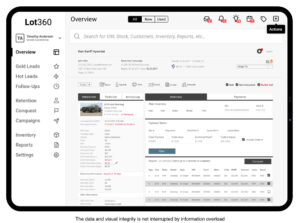
When implementing Ant Design within our project, we adhered to several core design principles to ensure that our use of this comprehensive UI toolkit not only enhanced the development process but also, and more importantly, prioritized the user experience. Here’s how we applied these principles while keeping the user at the center of our design strategy:
-
- Consistency Leveraging Ant Design’s extensive component library, we ensured a consistent look and feel across the entire platform. This consistency extended to typography, button styles, color schemes, and form elements, creating a cohesive user experience that users could quickly become familiar with. The user benefit would reduce the learning curve for new users and increase efficiency for returning users, as they don’t have to re-learn different UI patterns for similar actions.
- Feedback & Responsiveness Ant Design’s interactive components, such as modals, notifications, and tooltips, were utilized to provide immediate feedback to user actions. This included validation feedback on forms and dynamic loading states for data-heavy operations.The instant feedback keeps users informed about the result of their actions or the system status, enhancing the interaction’s intuitiveness and reducing user frustration.
- Efficiency & Simplification We streamlined workflows by using Ant Design’s grid system and layout components to organize information clearly and logically. Customizable tables and filters were employed to handle data presentation and manipulation efficiently. User Benefit: A well-organized UI and simplified workflows enable users to complete tasks more quickly and easily, significantly improving the overall efficiency of their interactions with the platform.
- Accessibility Adhering to WCAG standards, we customized Ant Design components to ensure accessibility, including keyboard navigation, screen reader support, and sufficient color contrast. Where necessary, we enhanced default components to meet our specific accessibility requirements. An accessible design ensures that the platform is usable for everyone, including users with disabilities, thereby widening the user base and promoting inclusivity.
- Scalability By adopting Ant Design’s theming capabilities and modular component structure, we built a design system that could easily scale and adapt to future needs. This included creating a set of reusable design tokens and components that could be shared across projects. A scalable and adaptable design system means that the platform can grow and evolve without sacrificing user experience, ensuring that users continue to benefit from improvements and new features over time.
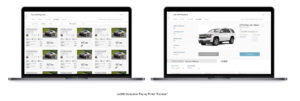
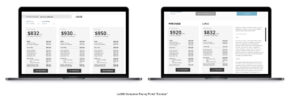
Throughout the design and development process, user feedback was continuously sought and incorporated. This iterative approach, combined with the robust foundation provided by Ant Design, ensured that our platform not only met the functional requirements but also delivered a delightful and user-friendly experience.
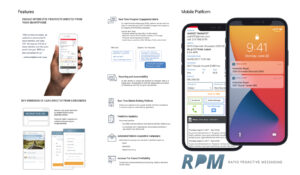
During the design and heuristic analysis phases, we proactively identified and resolved a range of usability issues, preparing Lot360 for a smooth transition to engineering. This phase involved meticulously building the prototype, integrating feedback, and refining our design system and components, always with a laser focus on optimizing the user experience. Our preparation for development handoff was comprehensive, involving detailed documentation of design choices, interactive prototypes, and a design system developed using Ant Design, ensuring the core principles of usability, consistency, and scalability were intrinsic to Lot360.
This harmonious blend of Design Thinking and Agile methodologies allowed us to evolve Lot360 beyond a mere aggregation of features into a solution that fundamentally transforms the dealership experience. By prioritizing the user at every step, we not only boosted the platform’s innovation and usability but also secured its successful adoption and impactful contribution to the automotive dealership industry.
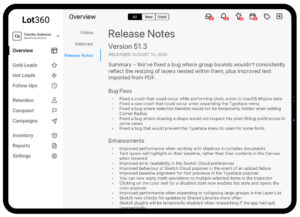
Following the handoff to engineering, our efforts pivoted towards facilitating the development process, ensuring Lot360’s usability, and gearing up for its market introduction. We maintained a collaborative stance with the engineering team, offering clarity and support on design implementations, and engaged in iterative reviews to safeguard the integrity of the user experience. Parallelly, we spearheaded the creation of detailed user documentation and training materials, while also conducting additional usability testing and quality assurance checks.
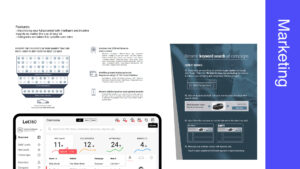
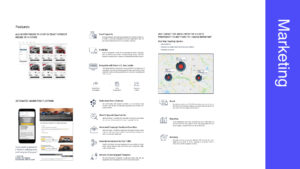
Concluding this case study, we delved into the nuanced process of developing a transformative solution for the automotive dealership landscape, underscoring the fusion of Design Thinking with Agile methodologies. This journey highlighted my team’s commitment to a user-centric approach and the dynamic, iterative process that propelled our project beyond mere functionality to achieve a truly impactful user experience. The collaboration across various disciplines underpinned the success of this venture, showcasing the immense value of diverse perspectives and expertise in shaping innovative solutions.
I extend my deepest gratitude to you for engaging with this case study within my personal portfolio. Your interest signifies a mutual dedication to innovation and excellence in the field of design and technology. The insights and methodologies detailed here have not only marked a significant milestone in my professional journey but have also laid the groundwork for best practices in design and collaboration that I’ve carried forward into subsequent projects. Working with multi-disciplinary teams has reinforced the importance of harnessing collective expertise to drive meaningful outcomes, a principle that continues to shape my approach to solving complex challenges.
If you believe my expertise in fostering user-centric solutions and strategic collaboration can help bridge the gap between your products and your users, I invite recruiters, UX and design leaders, and decision-makers to get in touch. Let’s explore how we can work together to create meaningful connections with your audience.
Look forward to hearing from you!
Torrey Owens
